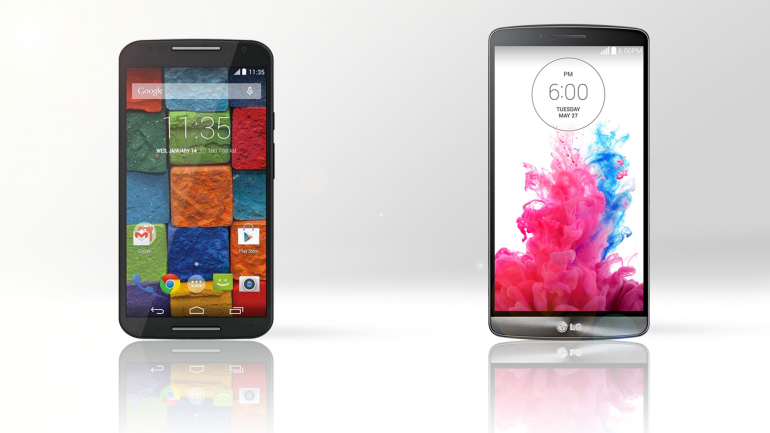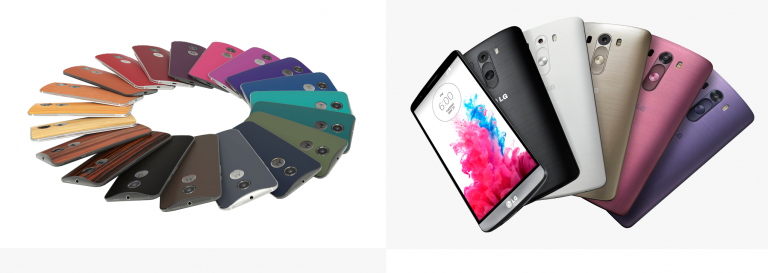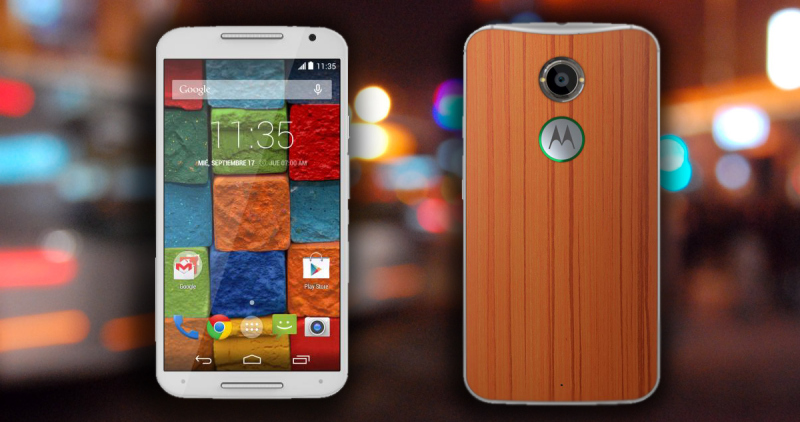The Moto X 2014 was introduced at IFA Berlin in September and it has quickly become one of the most talked about Motorola releases this year. Its brother, the Moto G 2014 was also introduced at the same event, aimed at a more budget oriented target audience. The new Moto X was launched recently and made available for pre-order starting at $500 off-contract. You can customize your Moto X however you want, selecting a back cover material and color, trim colors and even engraving. The LG G3, on the other hand was launched in June 2014 and was quickly dubbed one of the best smartphones you can find out there.
The LG G3 will set you back about $600 off-contract, so there’s not such a big price gap between the new Moto X and the LG G3. If you’re set on spending only $500 to upgrade your phone, the Moto X fits perfectly into your budget and offers quite the performance and features. The holidays are coming up and many of us are thinking about getting in on the sweeps and discounts which will surely be made available once November hits.
Price is a very important aspect when it comes to smartphones, but one still needs to consider what they get for that money and whether the handset they choose is better worth the dollar than others. For example, you could opt for a Meizu MX4 or a Xiaomi Mi4, which have much lower prices than mainstream smartphones we might find on the market, but the support for these phones might be a bit difficult to achieve since they are made by Chinese OEMs and you would have to send the phone to China if it needs repairs or upgrades. The cost of the delivery would singularly affect your overall budget for your smartphone.
Nonetheless, the Moto X 2014 and the LG G3 are two great options you can include on your wishlist, with excellent support and running Google’s latest Android 4.4 KitKat. These smartphones are (or will soon be) widely available, so you wouldn’t need to worry about support. Both these smartphones have been highly regarded by many tech enthusiasts, so no matter whether you would go for the LG G3 or the Motorola Moto X 2014, you would still get a good bang for buck ratio.
But just to be safe, it is best if you review the Moto X and LG G3 side by side, so that you can make an educated choice when deciding on one or another. The Moto X 2014 has a 5.2 inch AMOLED screen with 1080*1920 resolution and 424 ppi pixel density, protected by Corning Gorilla Glass 3. The Moto X measures 140.8 mm in height, 72.4 mm in widht and 10 mm in thickness. The design of the Moto X 2014 doesn’t stray a long way from its predecessor, with a polycarbonate basic chassis, metal frame and sturdy build with curved edges and ergonomic design. The fact that you can customize the Moto X (bamboo and leather back covers) a great deal is a definite plus for the device.
The LG G3 on the other hand, has a slightly bigger, 5.5 inch True HD-IPS + LCD display with a 1440*2560 resolution and 534 ppi pixel density. also protected by Corning Gorilla Glass 3. We can already spot one of the main differences between the LG G3 and Moto X 2014: screen size and quality. Many have already said that the LG G3 sports one of the best screens out there, except for the Super AMOLED screen on the Galaxy Note 4, of course. The display on the LG G3 provides great color reproduction, bright and vivid images, great contrast and an overall better experience for the user. Even though our eyes don’t necessarily detect the difference between a 534 ppi and a 424 pp pixel density, if put side by side, the LG G3’s display is just a bit sharper and crisper than that of the Moto X. Nonetheless, the Moto X offers great outdoor visibility and angle views, so disappointment would not be a possibility.
The LG G3 measures 146.3 mm in height, 74.6 mm in width and 8.9 mm in thickness. It is a bigger device than the Moto X 2014, but it is more than a mm thinner, so if you would like to get as close as possible to the record 5.1 mm thinness of the Gionee Elife S5.1, the LG G3 would be the more accurate choice. There are other devices out there that would suit you better if you’re into thin phones, like the Samsung Galaxy Alpha, Vivo X3, Huawei Ascend P6 and Sony Xperia Z Ultra. Some of thesewould set you back less than the Moto X or the LG G3, but don’t offer such high end specs. Except for the Galaxy Alpha, that would be your more expensive option.
In terms of design, the LG G3 back cover is a metal-looking plastic panel and the phone sports a curved back and edges. The Moto X doesn’t try to look something it’s not, whilst the LG G3 puts a lot of emphasis on the metallic finish of the back cover, which resembles that on the HTC One M8, but still feels hollow and cheap. The other versions of the LG G3 like the black or the white one don’t stand out as much as the gold one, though. The design on the Moto X is a bit more high-end than that on the LG G3, so if you prefer a more solid and durable handset, you should definitely check out the Moto X first.
As for specs, there isn’t much difference between the two phones, both of them running on a Snapdragon 801 CPU clocked at 2.5 GHz, backed by an Adreno 330 GPU. The Moto X has 2 GB of RAM available, whilst the LG G3 has either 2 GB or 3 GB of RAM to work with. The LG G3 also has a microSD card slot and a removable back panel, besides the 16 or 32 GB internal storage. The Moto X is available in the same storage configurations, but it doesn’t have a microSD card slot and you will have to add $50 to your price if you want the 32 GB version.
The LG G3 camra and the Moto X 2014 camera are 13 MP sensors with auto-focus and dual LED. The LG G3 camera has a laser autofocus and optical image stabilization implemented. whilst the Moto X camera only offers the basic camera features you would find on the average flagship released in 2014. Both smartphones handle photography pretty well, but the laser autofocus and optical image stabilization help out a lot on the LG G3. We are all aware that MP count and features don’t necessarily guarantee top performance, as demonstrated by the HTC One M8’s 4 MP dual camera and the iPhone 6 and iPhone 6 Plus 8 MP rear shooter. The LG G3 has a 2.1 MP front facing shooter, whilst the Moto X has a 2 MP selfie camera. Neither of these can rival with the Oppo N3 or the Huawei Ascend P7, but those were designed with selfie-enthusiasts in mind. If you don’t mind the inferior front cameras on these phones, both would be excellent choices if you’re keen on photography, but the LG G3 would be your best choice.
The Moto X has a 2300 mAH battery providing the juice, whilst the LG G3 has a 3000 mAH battery and can supposedly last for up to a day and a half. The Moto X can resist just as much with its smaller battery, since the LG G3 has more pixels it needs to power. The LG G3 has an IR blaster, which Motorola chose not to include on the Moto X 2014. On the other hand, the Moto X offers the stock Android experience, whilst the LG G3 has some minor OEM tweaks overlaid. The LG G3 features KnockCode, which is a handy way to wake your phone up, but the Moto X features a twist gesture which can instantly launch the camera app, which is neat. Neither of the devices have waterproof certifications, but the Moto X has been known to resist to splashes a bit more than the LG G3.
The Moto X has proven itself a worthy competitor to the popular LG G3, but the LG G3 has also demonstrated why it costs a bit more than the Moto X does. There isn’t that much of a difference between the two flagships and your choice will mostly depend on whether you enjoy a plastic design or a customizable one, a more powerful camera, bigger battery, removable back cover or sturdy design. I would personally choose the Moto X because it’s smaller and it packs all the features I’m looking in a phone for, for an acceptable price. I would muster up the extra $100 if I were interested in smartphone photography, which is better on the LG G3, but I’m not… Which would you choose?
 Load the Game Video Games, Reviews, Game News, Game Reviews & Game Video Trailers
Load the Game Video Games, Reviews, Game News, Game Reviews & Game Video Trailers







